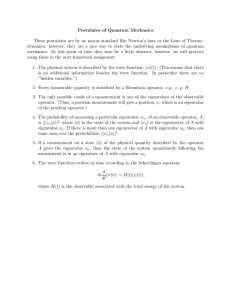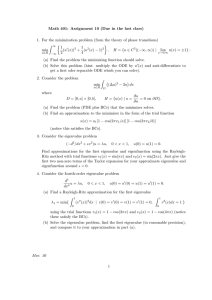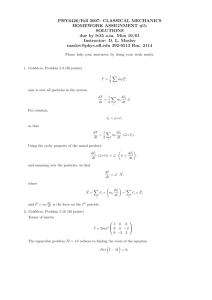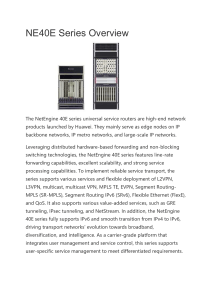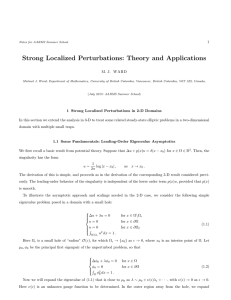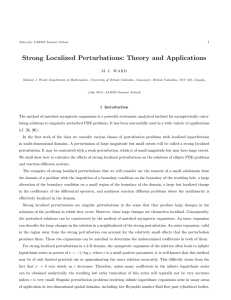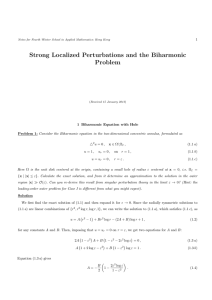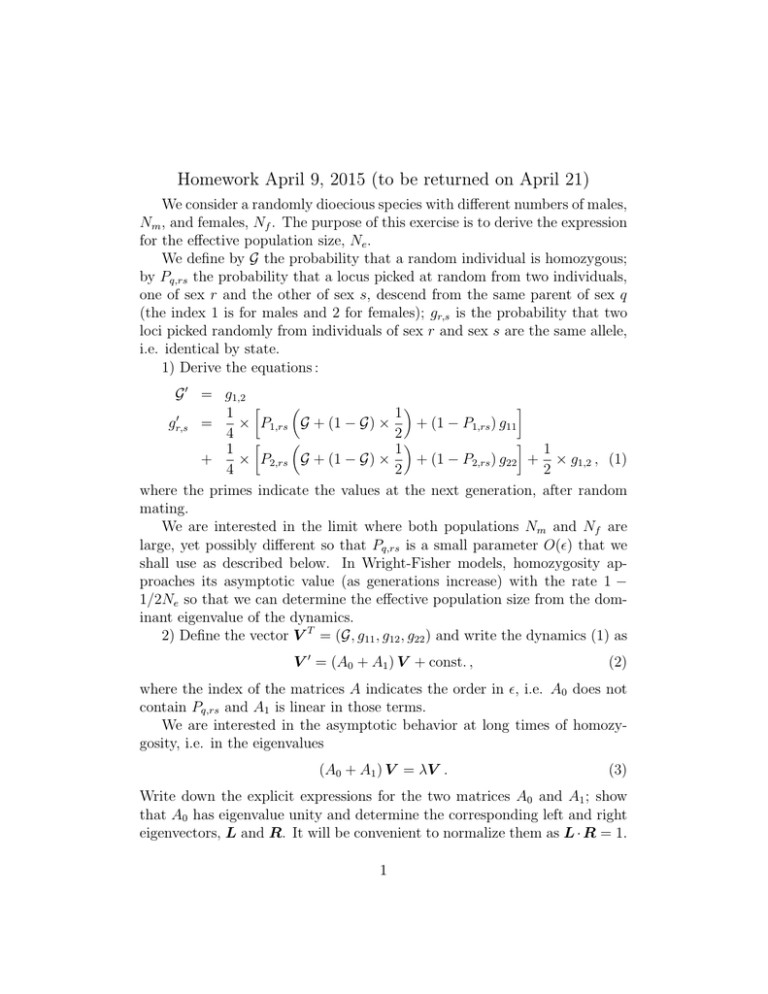
Homework April 9, 2015 (to be returned on April 21)
We consider a randomly dioecious species with different numbers of males,
Nm , and females, Nf . The purpose of this exercise is to derive the expression
for the effective population size, Ne .
We define by G the probability that a random individual is homozygous;
by Pq,rs the probability that a locus picked at random from two individuals,
one of sex r and the other of sex s, descend from the same parent of sex q
(the index 1 is for males and 2 for females); gr,s is the probability that two
loci picked randomly from individuals of sex r and sex s are the same allele,
i.e. identical by state.
1) Derive the equations :
G 0 = g1,2
1
1
0
× P1,rs G + (1 − G) ×
+ (1 − P1,rs ) g11
gr,s =
4
2
1
1
1
+
× P2,rs G + (1 − G) ×
+ (1 − P2,rs ) g22 + × g1,2 , (1)
4
2
2
where the primes indicate the values at the next generation, after random
mating.
We are interested in the limit where both populations Nm and Nf are
large, yet possibly different so that Pq,rs is a small parameter O() that we
shall use as described below. In Wright-Fisher models, homozygosity approaches its asymptotic value (as generations increase) with the rate 1 −
1/2Ne so that we can determine the effective population size from the dominant eigenvalue of the dynamics.
2) Define the vector V T = (G, g11 , g12 , g22 ) and write the dynamics (1) as
V 0 = (A0 + A1 ) V + const. ,
(2)
where the index of the matrices A indicates the order in , i.e. A0 does not
contain Pq,rs and A1 is linear in those terms.
We are interested in the asymptotic behavior at long times of homozygosity, i.e. in the eigenvalues
(A0 + A1 ) V = λV .
(3)
Write down the explicit expressions for the two matrices A0 and A1 ; show
that A0 has eigenvalue unity and determine the corresponding left and right
eigenvectors, L and R. It will be convenient to normalize them as L · R = 1.
1
3) Use the results above and the small value of to find perturbatively
the dominant eigenvalue λ = 1 − 1/2Ne + . . . of (3). The corresponding right
eigenvector is sought as V = R+v 1 +. . .. The eigenvalue equation (3) at the
order 0 is A0 R = R, which is satisfied by construction. Find the eigenvalue
equation at the order and take its scalar product with L to show that
−
1
= LT A1 R ,
2Ne
(4)
and write down the explicit expression in terms of the Pq,rs .
4) For simple generation processes Pq,rs = N1q . Show then that
Ne =
4Nm Nf
.
Nm + Nf
5) Show that Ne ≤ N = Nm + Nf . Estimate Ne /N for Nm = 0.1Nf .
2
(5)






